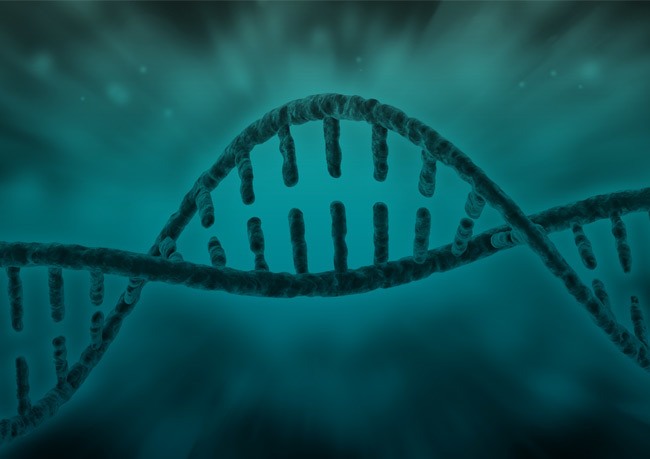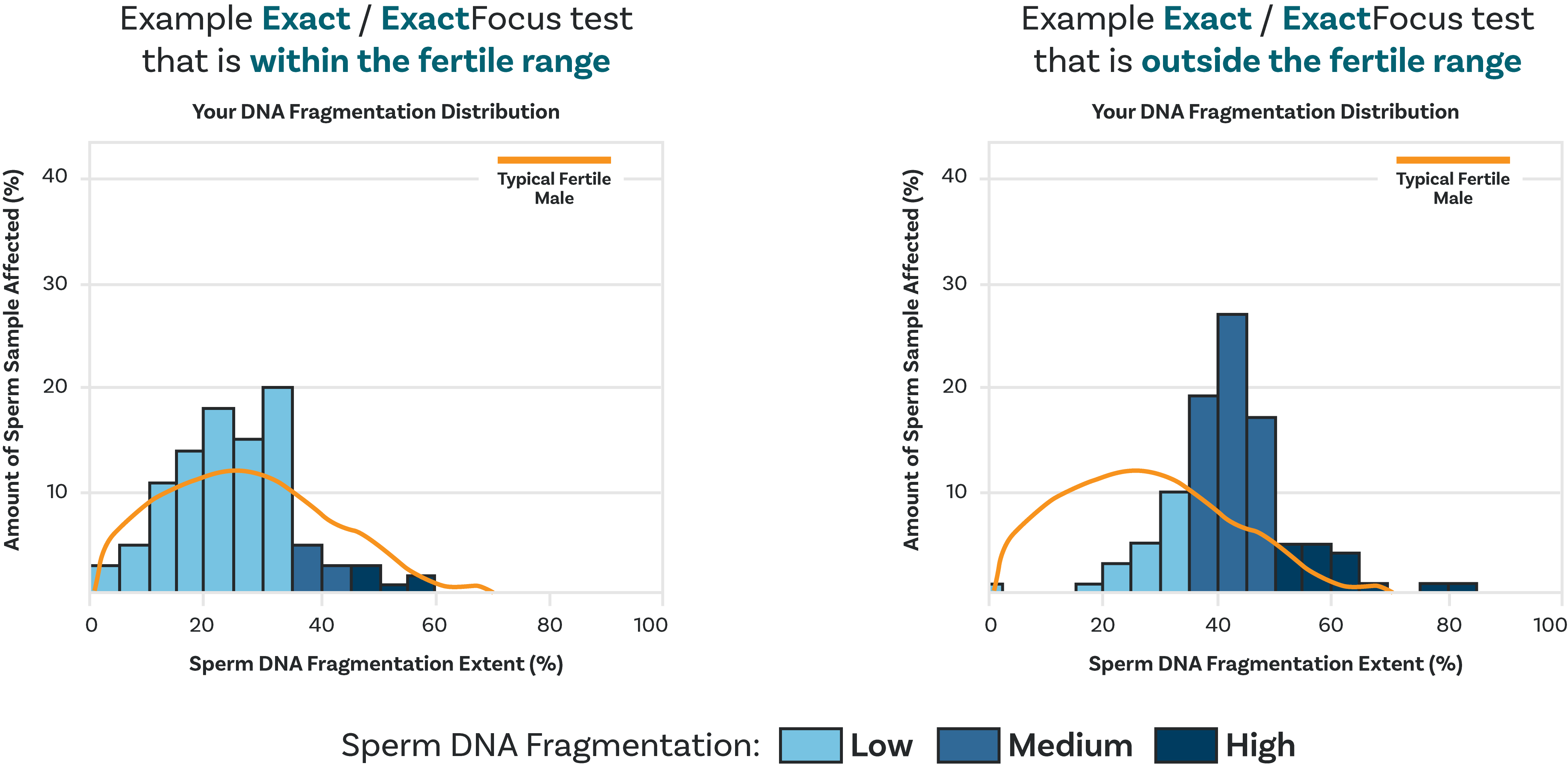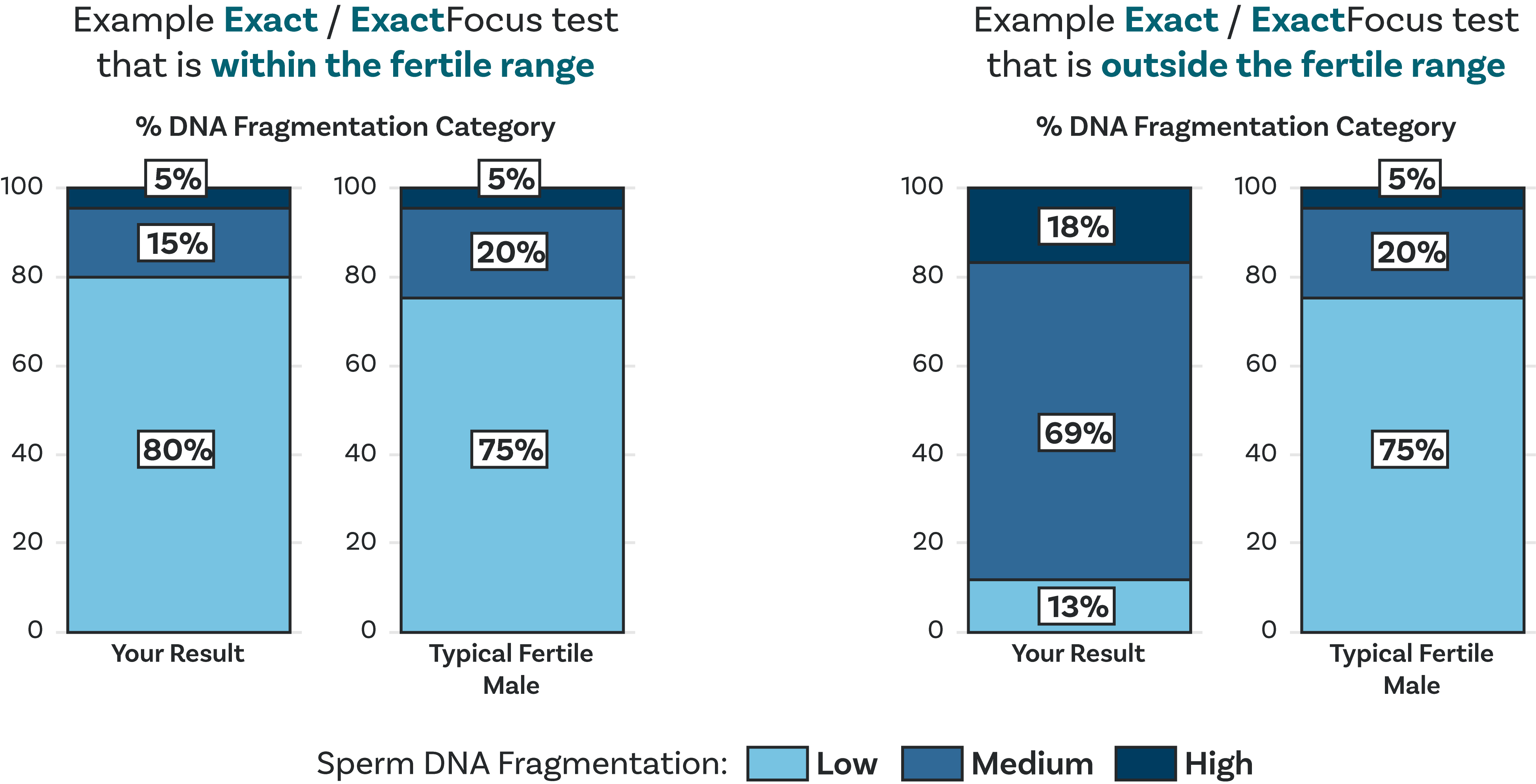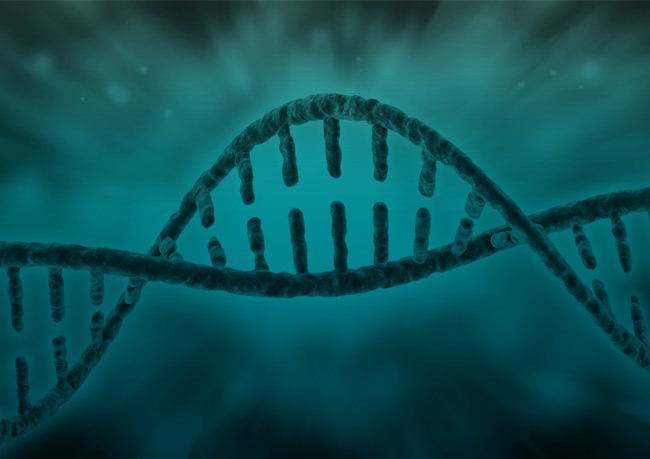2. Your DNA Fragmentation Distribution
The DNA Fragmentation Distribution histogram provides a more comprehensive view of the distribution of damage across your sample. The width of each of the columns shows the extent of the SDF damage category (e.g. 20-25% damaged) and the height of each column shows the proportion(%) of your sample that has that damage extent. Additionally, the profile of a typical fertile male is also shown superimposed onto your results so you can see how your SDF damage distribution compares.









